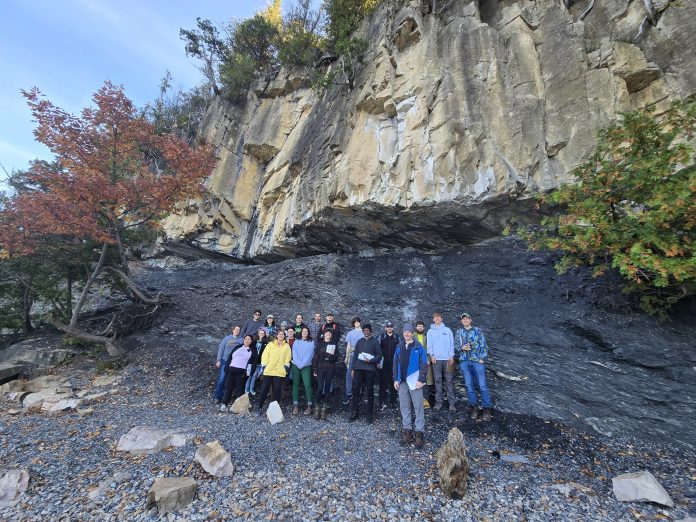One of the many benefits of pursuing a degree in earth science at Southern is the opportunity for hands-on learning through fieldwork. Students in the Earth Science Department and student-run Earth Science Club not only learn in the classroom, they enjoy the outdoors and travel to new places around Connecticut and New England to explore the processes that shape the Earth in real-world settings.
This fall, two classes—Invertebrate Paleontology (ESC 332) and Structural Geology (ESC 350)—traveled to the Champlain Valley in northern Vermont to learn about the geologic history of the region. The group, accompanied by faculty members, enjoyed classic New England fall weather, with the leaves in peak color, as they journeyed by charter bus to various geologically significant sites.
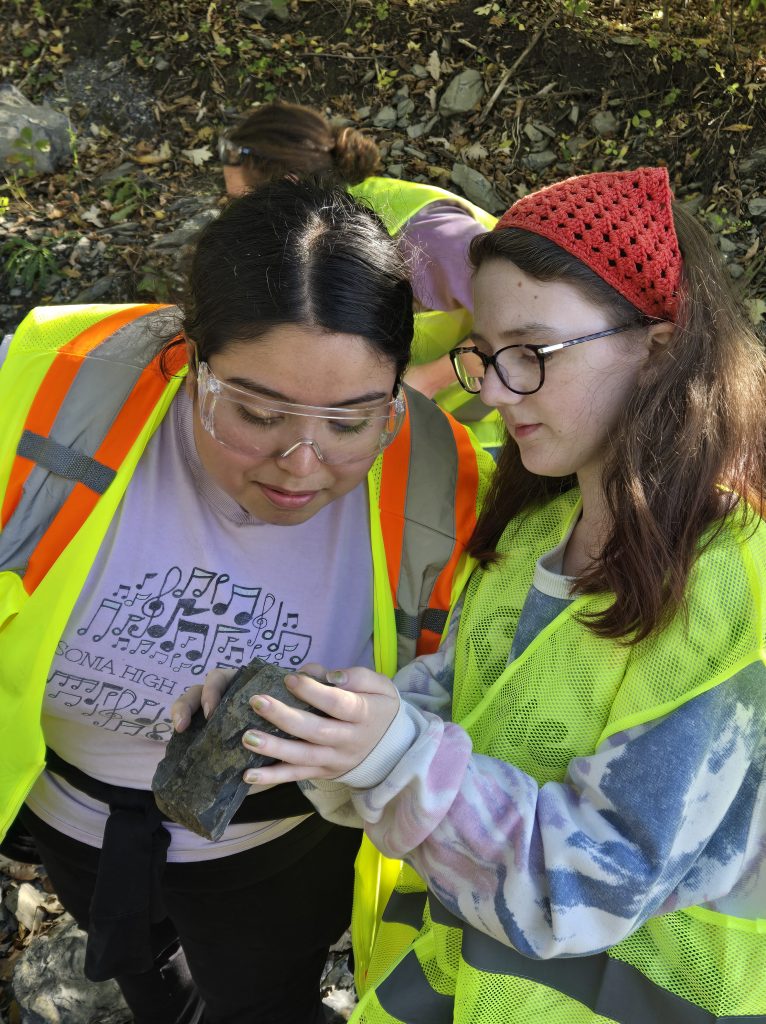
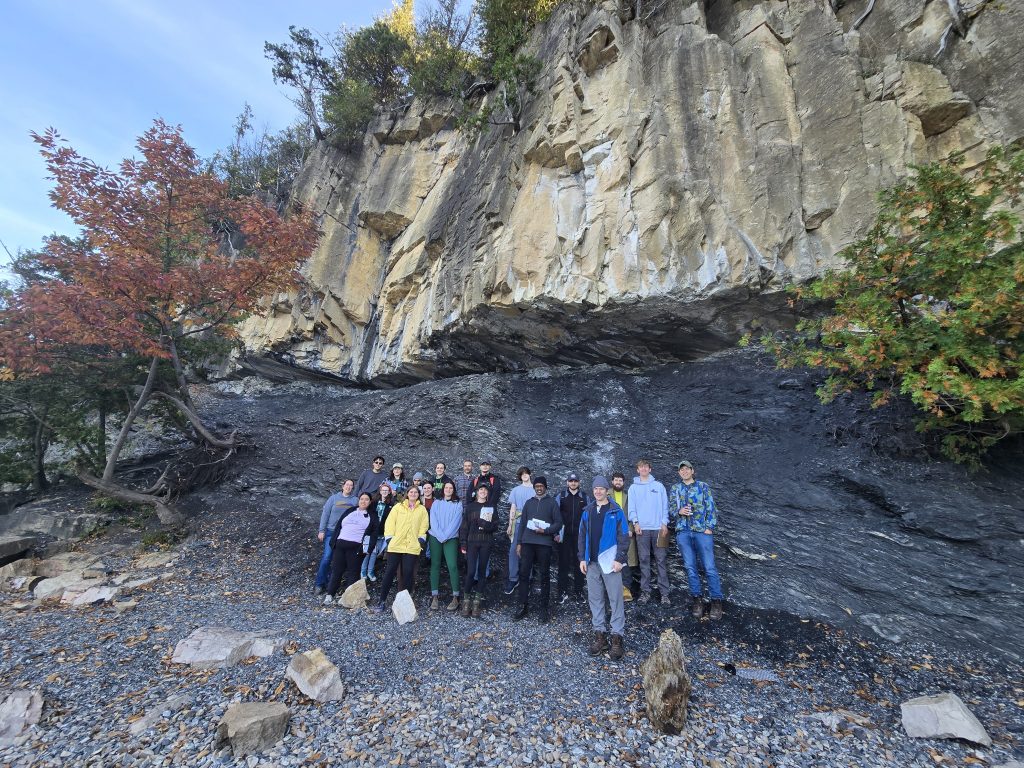
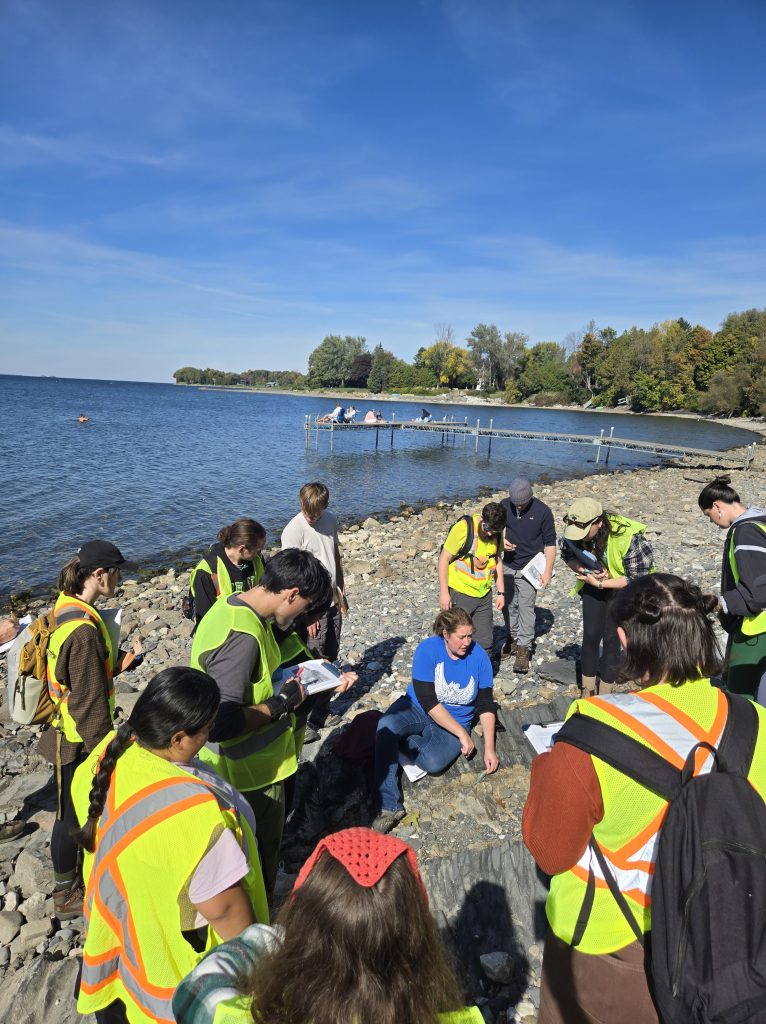
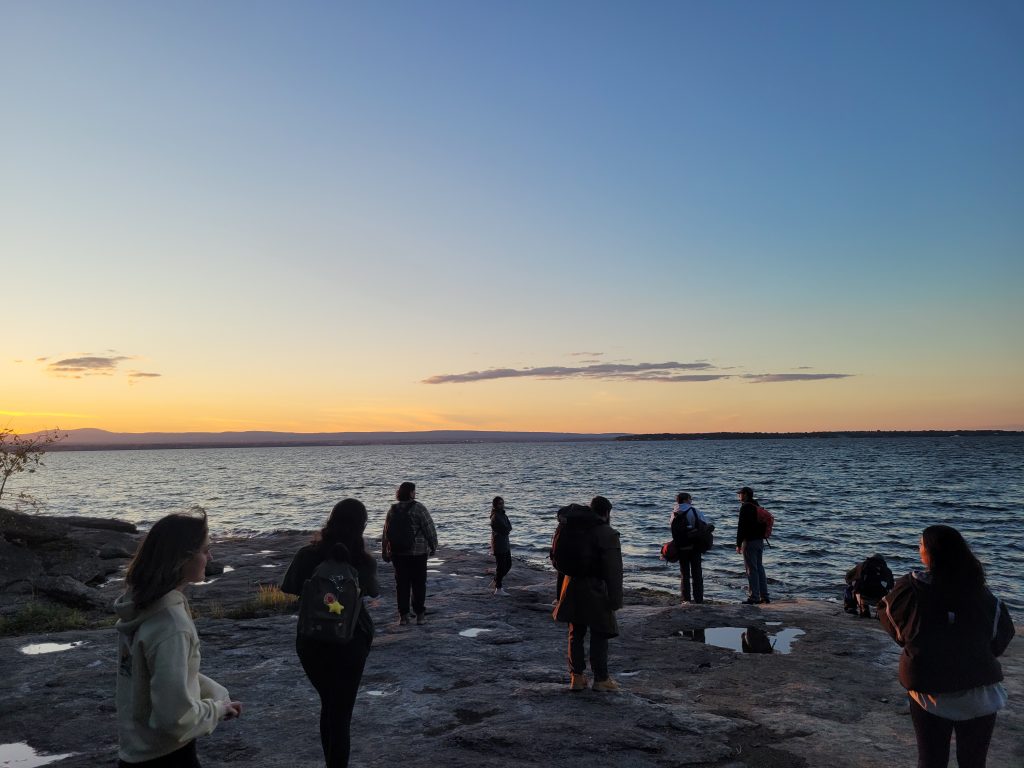
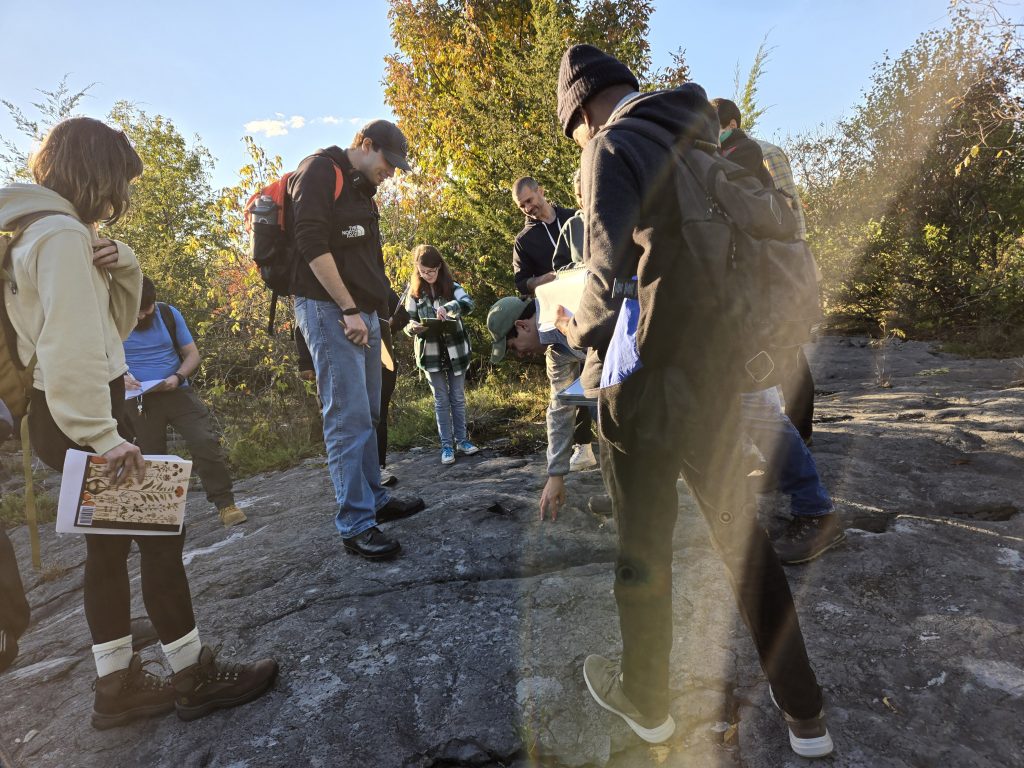
According to Nicholas Fedorchuk, associate professor and interim chair of earth science, students examined 450-million-year-old fossil reefs, remnants of when the area was a shallow, tropical seaway called the Iapetus Ocean. They also explored ancient fault systems in the region related to the formation of the Appalachian Mountains.
Throughout the trip, students collected fossil samples and recorded measurements of faults and fractures for future lab work. Faculty members guided them through the geologic history of the area, highlighting key formations and features that reveal how the east coast of North America came to be.
The group spent the night in cabins on Grand Isle, located in Lake Champlain, where they had time to stargaze and unwind with a geology-themed movie.
“Overall, it was a great experience for the students and faculty — one that we hope to repeat every couple of years,” said Fedorchuk.

